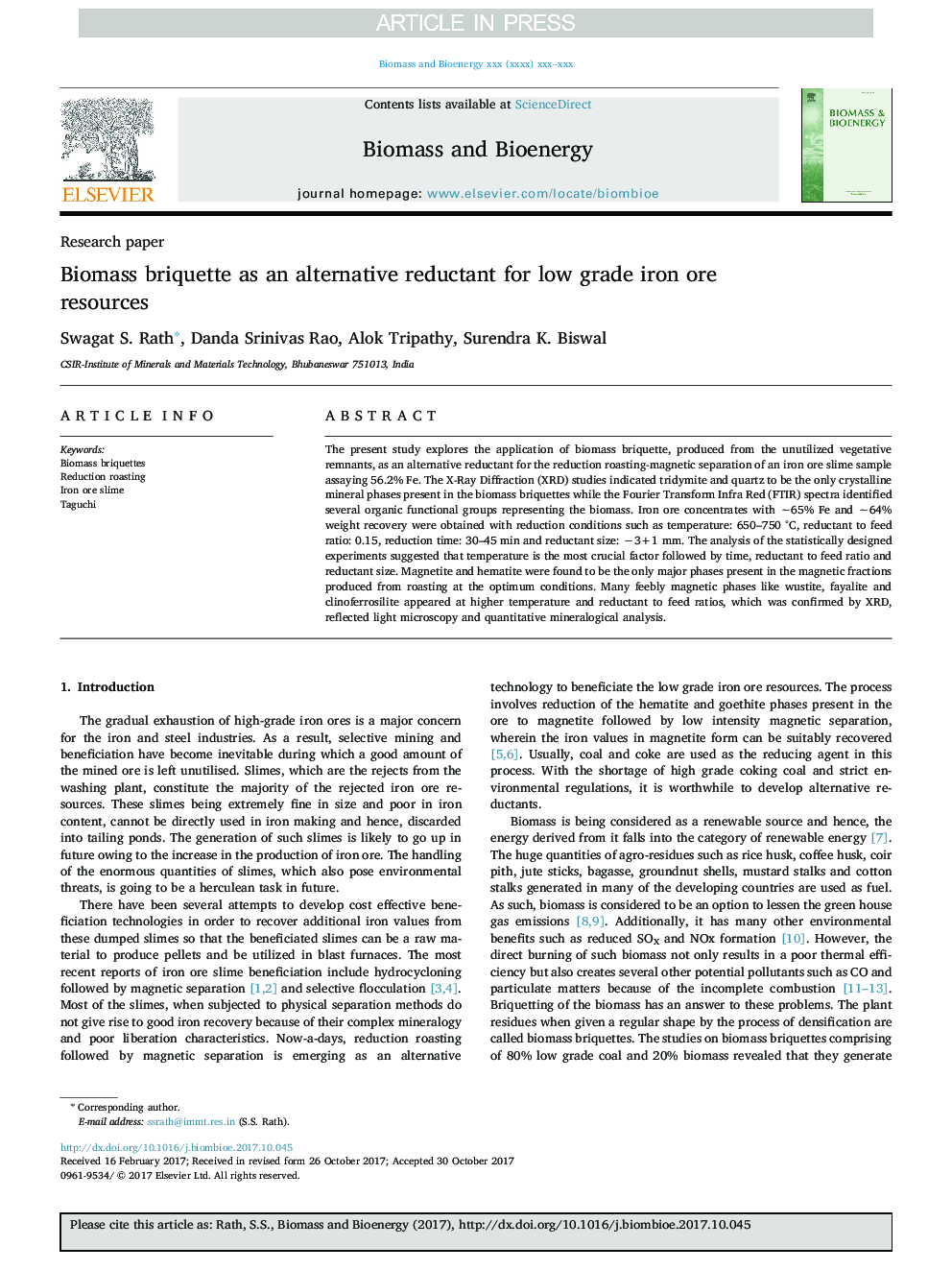| Article ID | Journal | Published Year | Pages | File Type |
|---|---|---|---|---|
| 7063081 | Biomass and Bioenergy | 2018 | 8 Pages |
Abstract
The present study explores the application of biomass briquette, produced from the unutilized vegetative remnants, as an alternative reductant for the reduction roasting-magnetic separation of an iron ore slime sample assaying 56.2% Fe. The X-Ray Diffraction (XRD) studies indicated tridymite and quartz to be the only crystalline mineral phases present in the biomass briquettes while the Fourier Transform Infra Red (FTIR) spectra identified several organic functional groups representing the biomass. Iron ore concentrates with â¼65% Fe and â¼64% weight recovery were obtained with reduction conditions such as temperature: 650-750 °C, reductant to feed ratio: 0.15, reduction time: 30-45 min and reductant size: â3+1 mm. The analysis of the statistically designed experiments suggested that temperature is the most crucial factor followed by time, reductant to feed ratio and reductant size. Magnetite and hematite were found to be the only major phases present in the magnetic fractions produced from roasting at the optimum conditions. Many feebly magnetic phases like wustite, fayalite and clinoferrosilite appeared at higher temperature and reductant to feed ratios, which was confirmed by XRD, reflected light microscopy and quantitative mineralogical analysis.
Related Topics
Physical Sciences and Engineering
Chemical Engineering
Process Chemistry and Technology
Authors
Swagat S. Rath, Danda Srinivas Rao, Alok Tripathy, Surendra K. Biswal,
